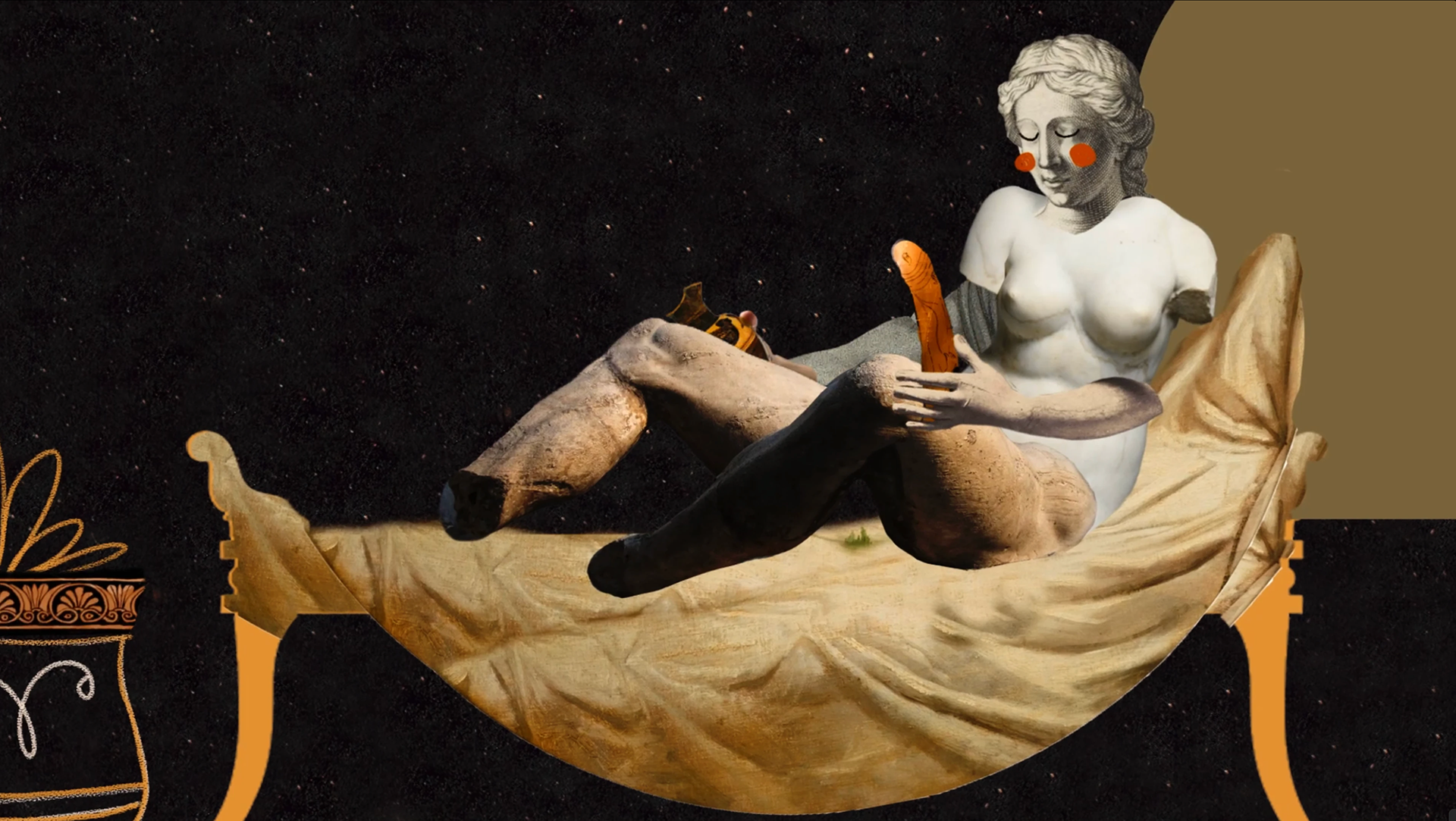Stimmt es, dass...
TV documentary format, 25 min., airs weekly | Commissioned by Arte TV
TV documentary format, 25 min., airs weekly | Commissioned by Arte TV
I was invited by the German production company Hyperbene to create the animation for one episode of Stimmt es, dass…?, a series aired on ArteTV.
The show revisits history starting from a seemingly simple question: “Is it true that…?”
Each episode combines expert interviews, real footage, and animation to reveal unexpected connections between different eras, cultures, and ways of life.
All animations in the series are created using collage, and I had full creative freedom to visually interpret the extensive historical research provided by the production team.
The theme I worked on couldn’t have been more intriguing: tracing the history of the vibrator and investigating whether it was invented in 19th-century England to “cure” female hysteria.
The research opened the door to fascinating discoveries: from the ways the female body was perceived across centuries (the uterus was once believed to behave like an animal inside the woman's body!) to Greek vases from nearly 500 BCE depicting olisbos (phallic pleasure objects), to 17th-century Japanese woodblock prints showing couples using dildos without it being considered a threat to the husband’s masculinity, and finally to the story of the feminist Olympe de Gouges, who was executed at the start of the French Revolution for demanding that the newly drafted civil code include women as citizens with rights.
Creating this episode was an immense pleasure, full of discoveries, and a chance to bring to life parts of history that rarely receive attention.
Each episode combines expert interviews, real footage, and animation to reveal unexpected connections between different eras, cultures, and ways of life.
All animations in the series are created using collage, and I had full creative freedom to visually interpret the extensive historical research provided by the production team.
The theme I worked on couldn’t have been more intriguing: tracing the history of the vibrator and investigating whether it was invented in 19th-century England to “cure” female hysteria.
The research opened the door to fascinating discoveries: from the ways the female body was perceived across centuries (the uterus was once believed to behave like an animal inside the woman's body!) to Greek vases from nearly 500 BCE depicting olisbos (phallic pleasure objects), to 17th-century Japanese woodblock prints showing couples using dildos without it being considered a threat to the husband’s masculinity, and finally to the story of the feminist Olympe de Gouges, who was executed at the start of the French Revolution for demanding that the newly drafted civil code include women as citizens with rights.
Creating this episode was an immense pleasure, full of discoveries, and a chance to bring to life parts of history that rarely receive attention.


